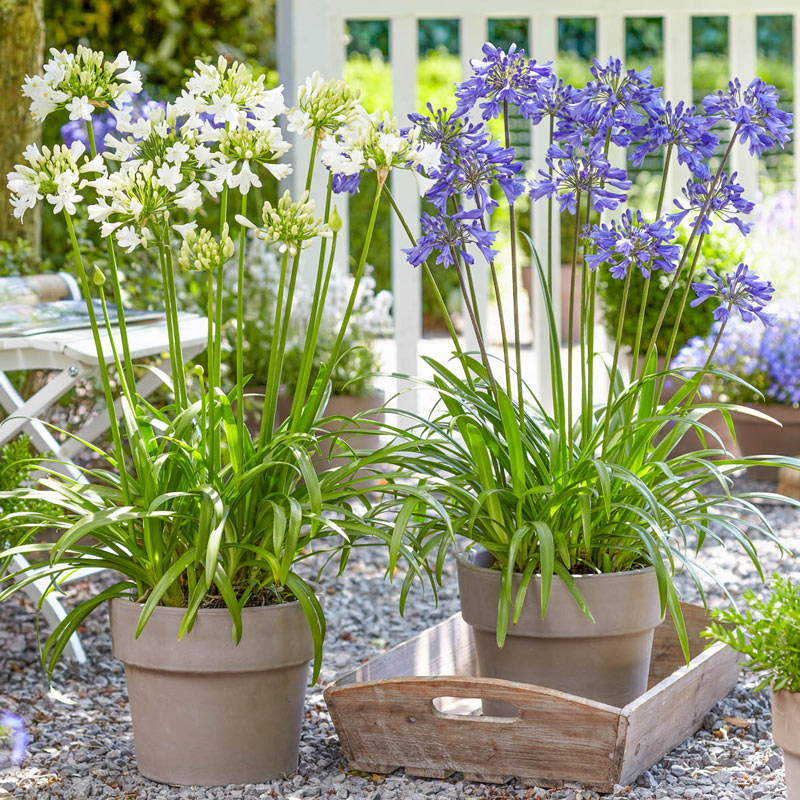Understanding the Art of Agapanthus Care: Necessary Actions for Healthy And Balanced Development and Dynamic Flowers
In the world of cultivation, the growing of agapanthus stands as a gratifying undertaking for those who look for to support these stylish blooming plants. With their striking flowers and stylish vegetation, agapanthus has captured the interest of gardeners worldwide. However, achieving optimum growth and vibrant blossoms requires a nuanced technique that incorporates different important steps. From picking the ideal selection to mastering pruning strategies, the trip towards cultivating thriving agapanthus plants is multifaceted and holds the essential to unlocking the complete potential of these herb treasures.

Choosing the Right Agapanthus Selection

When choosing the appropriate Agapanthus selection for your yard, think about elements such as climate viability, bloom shade, and growth routine. Additionally, take into consideration the climate in your area to guarantee the Agapanthus range you pick can flourish in your specific problems. Recognizing the growth behavior of various Agapanthus ranges is critical for proper placement within your garden.
Perfect Growing Problems
Thinking about the ideal environmental demands is essential for effective Agapanthus cultivation. Agapanthus plants are sensitive to cool temperature levels and need to be secured from frost during winter months.
To make sure healthy growth and vibrant blossoms, plant Agapanthus bulbs at a depth of concerning 2-4 inches and space them 8-12 inches apart. Including organic issue, such as garden compost, to the dirt can boost drainage and fertility, advertising robust origin growth. Mulching around the base of the plants aids retain moisture and suppresses weed development. Normal watering is crucial, especially throughout the growing season, to keep the dirt constantly wet yet not saturated.
Watering and Feeding Tips
Maintaining proper wetness degrees and offering crucial nutrients are key components in the treatment routine for Agapanthus plants. When it comes to watering Agapanthus, it is critical to strike an equilibrium. These plants choose consistently moist dirt but are susceptible to root rot if overwatered.
Feeding Agapanthus is crucial for advertising healthy development and respected blooms. Use a well balanced fertilizer, such as a 10-10-10 formula, in the very early spring as brand-new growth arises. By adhering to these watering and feeding ideas, you can ensure your Agapanthus plants prosper and produce vivid, lasting blooms.
Pruning Strategies for Agapanthus
Trimming Agapanthus plants at the ideal Recommended Reading times and with proper strategies is vital for maintaining their wellness and promoting optimum development and flowering. The excellent time to prune Agapanthus remains in late wintertime or very early springtime prior to brand-new development emerges. Begin by eliminating any kind of dead or yellowing leaves near the base of the plant. Cut them as close to the ground as possible without harming the arising shoots.
Deadheading invested blossoms can additionally reroute the plant's power right into generating even more flowers instead than setting seeds. If you desire to gather seeds for propagation, leave some blossoms to dry and fully grown on the plant.
Bear in mind to make use of clean, sharp tools to make specific cuts and lower the danger of introducing conditions. Agapanthus. Regular trimming will aid keep your Agapanthus looking healthy and balanced and cool while making sure an abundant screen more information of beautiful flowers
Managing Typical Pests and Illness
After ensuring appropriate trimming techniques for Agapanthus, it is necessary to resolve common insects and diseases that can influence the health and vigor of these plants. One usual parasite that influences Agapanthus is the Agapanthus gall midget.
An additional usual problem is fungal fallen leave read what he said spot, which provides as dark lesions on the leaves. To avoid fungal diseases, guarantee good air blood circulation around the plants, prevent overhanging watering, and eliminate any type of infected leaves promptly. Furthermore, Agapanthus plants can endure from origin rot if they are grown in poorly draining pipes dirt. To avoid this, plant Agapanthus in well-draining dirt and stay clear of overwatering. By being vigilant and taking timely action against illness and insects, you can aid your Agapanthus plants prosper and create vibrant blossoms.

Conclusion
In verdict, grasping the art of agapanthus care includes selecting the right range, providing suitable planting problems, appropriate watering and fertilizing, appropriate trimming techniques, and addressing typical pests and illness. By following these necessary actions, you can ensure healthy and balanced growth and dynamic flowers for your agapanthus plants. Keep in mind to regularly monitor and maintain your plants to promote their overall health and longevity.
To guarantee healthy and balanced growth and lively blooms, plant Agapanthus bulbs at a deepness of concerning 2-4 inches and room them 8-12 inches apart. By complying with these watering and fertilizing pointers, you can ensure your Agapanthus plants prosper and produce lively, long-lasting blooms.
One common parasite that influences Agapanthus is the Agapanthus gall midget. Additionally, Agapanthus plants can suffer from origin rot if they are planted in badly draining pipes dirt. By adhering to these necessary steps, you can guarantee healthy growth and vibrant blossoms for your agapanthus plants.